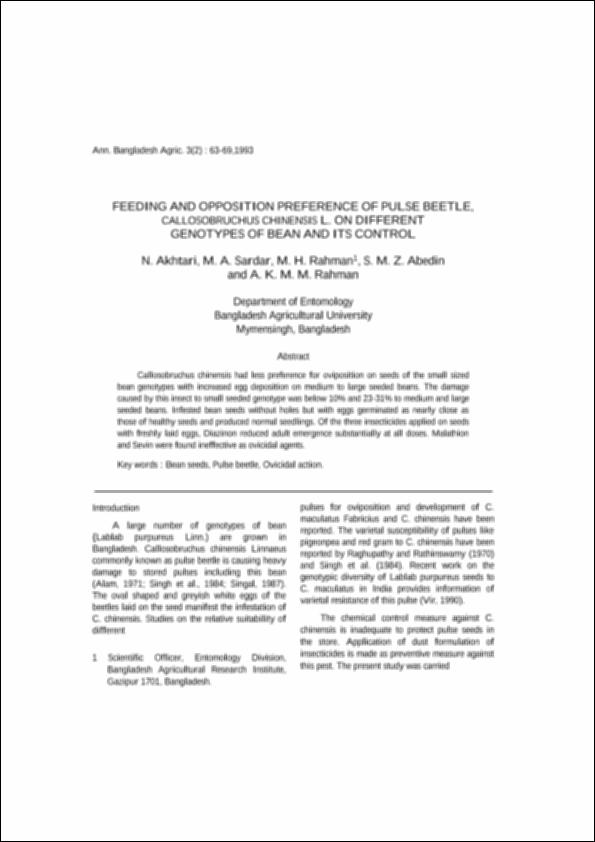| dc.contributor.author | Akhtari, N. | |
| dc.contributor.author | Sardar, M. A. | |
| dc.contributor.author | Rahman, M. H. | |
| dc.contributor.author | Abedin, S. M. Z. | |
| dc.contributor.author | Rahman, A. K. M. M. | |
| dc.date.accessioned | 2021-01-18T06:27:25Z | |
| dc.date.available | 2021-01-18T06:27:25Z | |
| dc.date.issued | 1993-12 | |
| dc.identifier.uri | http://publications.bsmrau.edu.bd/handle/123456789/755 | |
| dc.description.abstract | Callosobruchus chinensis had less preference for oviposition on seeds of the small sized bean genotypes with increased egg deposition on medium to large seeded beans. The damage caused by this insect to small seeded genotype was below 10% and 23-31% to medium and large seeded beans. Infested bean seeds without holes but with eggs germinated as nearly close as those of healthy seeds and produced normal seedlings. Of the three insecticides applied on seeds with freshly laid eggs, Diazinon reduced adult emergence substantially at all doses. Malathion and Sevin were found ineffective as ovicidal agents. | en_US |
| dc.description.sponsorship | BSMRAU | en_US |
| dc.language.iso | en | en_US |
| dc.publisher | BSMRAU | en_US |
| dc.relation.ispartofseries | Vol-3;No-2 | |
| dc.subject | Bean seeds | en_US |
| dc.subject | Pulse beetle | en_US |
| dc.subject | Ovicidal action | en_US |
| dc.title | Feeding and opposition preference of pulse beetle, callosobruchus chinensis l. on different genotypes of bean and its control | en_US |
| dc.type | Article | en_US |

